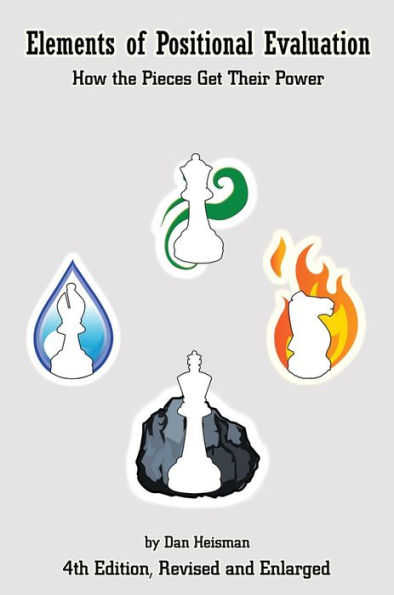Elements of Positional Evaluation: How the Pieces Get Their Power
Which side stands better? How much better? Why? Most chess players rely on loosely knit, unstructured methods to evaluate chess pieces and positions. They learn positional principles which often lead to inaccurate evaluations and faulty decisions about how to proceed. This ground-breaking book by best-selling chess author Dan Heisman addresses the evaluation and understanding of how static features affect the value of the pieces in a given position. Now in its fourth edition, emphasis is placed on the static evaluation of each piece’s value and its role in the overall position rather than the assessment of a specific position, but Heisman’s approach can also be applied to help evaluate entire positions by helping to answer the questions who stands better, by how much, and why?
"1100409595"
Elements of Positional Evaluation: How the Pieces Get Their Power
Which side stands better? How much better? Why? Most chess players rely on loosely knit, unstructured methods to evaluate chess pieces and positions. They learn positional principles which often lead to inaccurate evaluations and faulty decisions about how to proceed. This ground-breaking book by best-selling chess author Dan Heisman addresses the evaluation and understanding of how static features affect the value of the pieces in a given position. Now in its fourth edition, emphasis is placed on the static evaluation of each piece’s value and its role in the overall position rather than the assessment of a specific position, but Heisman’s approach can also be applied to help evaluate entire positions by helping to answer the questions who stands better, by how much, and why?
19.95
In Stock
5
1

Elements of Positional Evaluation: How the Pieces Get Their Power
216
Elements of Positional Evaluation: How the Pieces Get Their Power
216Paperback(Enlarged)
$19.95
19.95
In Stock

Product Details
| ISBN-13: | 9781949859621 |
|---|---|
| Publisher: | Russell Enterprises, Incorporated |
| Publication date: | 03/30/2023 |
| Edition description: | Enlarged |
| Pages: | 216 |
| Sales rank: | 485,925 |
| Product dimensions: | 6.00(w) x 8.60(h) x 0.50(d) |
About the Author
From the B&N Reads Blog
